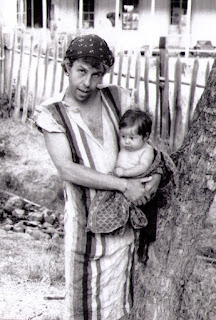I love technology. I wrote the first system-wide technology integration grant for the Watsonville schools and pioneered efforts to teach teachers how to use technology so their students could create and express themselves more effectively, and I still do that same kind of technology teaching – how do we use technology to help our students share their voices with the global audience the Internet affords? How do we leverage our proximity to the global center of technological innovation “over the hill” so that students whose parents work in the fields can have the opportunity to participate in that wider economy?
Lately I've become uncomfortable with being identified as a technologist. I'm starting to call myself a teaching artist, since what I'm most passionate about is returning the arts to the core of our educational system. The Common Core standards have some elements which improve on prior standards, and other elements which violate common sense and what we know of child development. But standards, good, bad, flawed or eloquent, matter little for learning outcomes. [I can cite chapter and verse for anyone interested.] What’s truly dangerous about the way the Common Core standards are being deployed and implemented is the way their proponents call for huge investments in technology upgrades to meet the privacy and security needs of an expanded and intensified testing regimen, and almost as much investment in paying the same old corporate textbook publishers to construct bogus curricula for teachers to “deliver.”
Talk to almost any teachers in the field, and they will agree that reduced class size and adequate time to prepare lessons in collaboration with their colleagues would make much more of difference to the learning outcomes of their students than any computer program, textbook, or curriculum. The freedom to develop their own curriculum, teaming with others on their staff and in their local community, would be so much more effective than any package a sales rep could offer to their administrator. The work of improving our schools should happen at the local level, with teachers working in teams and parents and local businesses joining in. The technology hustlers have tricked us into thinking that their machines can somehow replace the people who make the human contact on which learning depends.
It saddens me to watch Obama struggling to overcome the problems he created for himself by believing the hustler who sold him that “easy as Travelocity or Amazon” line. He could easily have created a rollout based on highlighting the teams of health care facilitators who would be deployed throughout the nation to educate a confused public on how having near-universal access to health insurance could improve every local community. Yes, when those facilitators meet with their clients, they use a Web site to navigate the options and simplify the paperwork, and yes, anyone with access to a computer can go ahead and do it on their own if they like, but the focus should have been on the people who would be out there in the community talking to people about their needs and how the Affordable Care Act could help them and the whole community. Let’s try to get back to the basics – we need affordable medical care to keep our communities healthy and good schools to help our children learn what they need to be able to participate in those communities. In both cases, what’s important is the people, not the machines.










